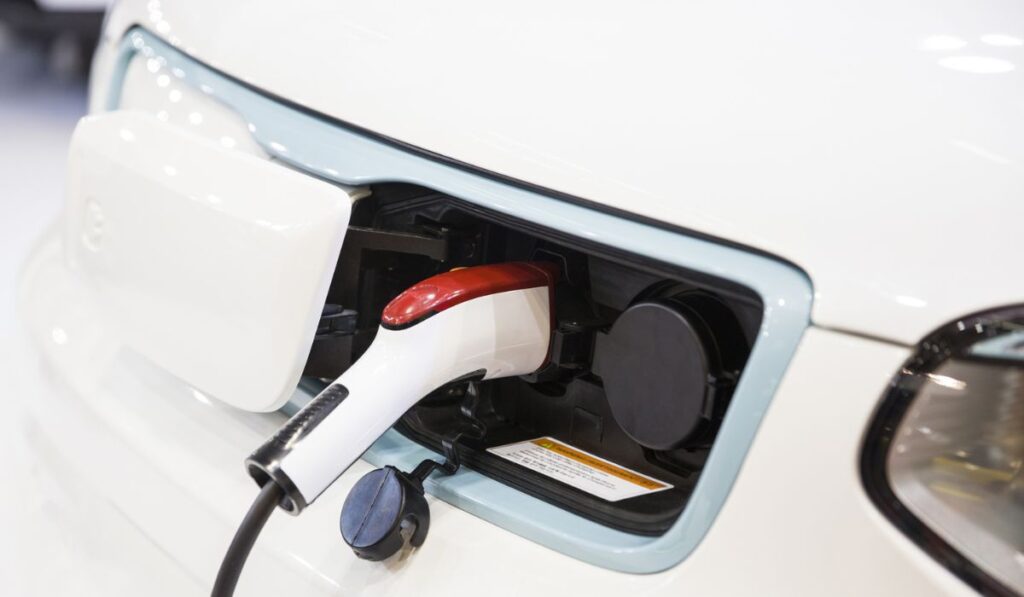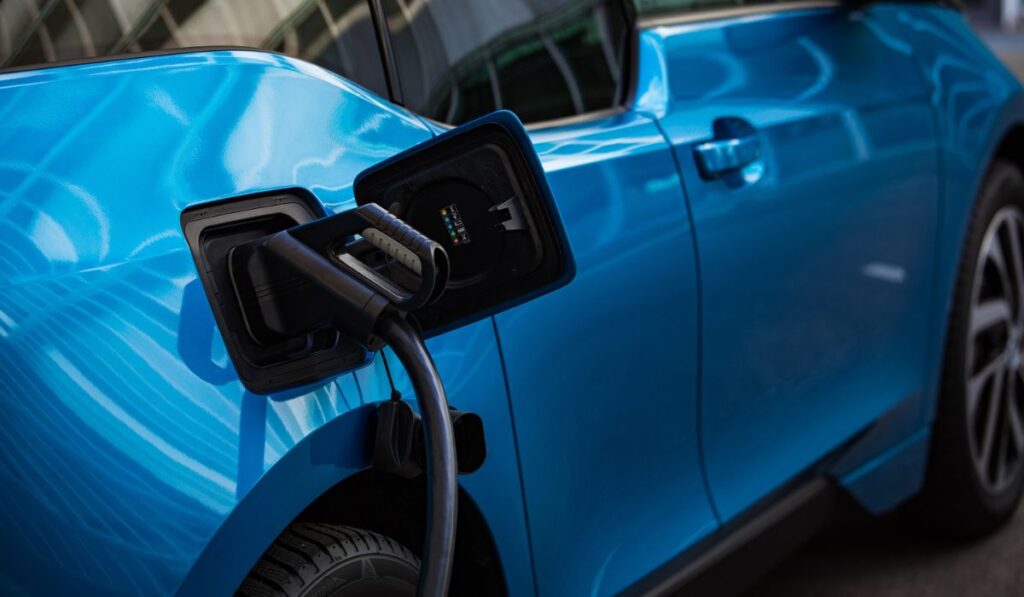We all know that fully electric vehicles don’t require gas. Instead, these cars are charged daily to achieve similar results. However, why do electric vehicles (EVs) require daily charging, and why can’t they charge themselves while out on the road?
Electric vehicles can’t charge themselves because they don’t have an alternator. The alternator used in traditional vehicles transforms mechanical energy into electrical energy and feeds it into the battery. EVs use DC/DC converters and regenerative braking to achieve similar results.
Don’t panic if you’re still confused. EVs are systems with complex components that can take a bit of time to fully understand. Thankfully, we’ve gathered everything you need to know. Read on for the full story behind why electric cars can’t charge themselves.
Why Electric Cars Cannot Charge Themselves

One of the main downsides to electric cars is the fact they can’t charge themselves. EVs require owners to regularly charge the lithium-ion battery packs — as opposed to using gasoline. You don’t have to worry about charging the battery in a traditional gas-powered vehicle. The battery in conventional cars charges while you drive.
Part of the reason EVs can’t charge themselves is due to the lack of an alternator. However, EVs use other components and technologies to achieve similar results.
Alternators
Standard vehicles with an internal combustion engine typically have an alternator. The alternator is an electrical generator that transforms mechanical energy into electrical energy and then an alternating current that is fed back into the battery, charging it in the process.
The alternator is composed of a rotating magnet surrounding a stationary armature that creates kinetic and potential energy. Kinetic energy is energy created by movement, and potential energy is energy produced by stresses within an object.
The batteries of a standard car provide electricity to start the engine. The combustion engine then provides mechanical energy to the alternator. The alternator takes that mechanical energy and produces electrical energy for the battery, replacing any energy that has been lost.
This allows combustion engine vehicles to use fossil fuel to keep the car running. Standard vehicles use fuel as a primary energy source, and it can’t be reproduced through energy conversion.
Why Don’t Electric Cars Have Alternators?
So, if an alternator works to charge a battery, why don’t EVs utilize one in their systems? There are two primary reasons electric vehicles don’t use an alternator:
- Electric vehicles don’t have an engine.
- Electric vehicles use other devices that are more efficient than an alternator.
The energy that powers an alternator is mechanical energy created by the combustion of fossil fuel in an engine. EVs don’t have an engine that runs on gas or diesel fuel. Instead, EVs have an electric motor and rechargeable batteries.
Electric vehicles could still use an alternator to generate electricity, but this would be using electricity to create electricity.
There would be multiple conversion losses on the way, showing up as heat, noise, or vibration. Using an alternator in an EV would produce smaller amounts of electricity and be less efficient.
Instead, electric vehicles use DC/DC converters in place of a traditional alternator. These devices are comparatively more efficient and lightweight.
Self Charging Possibilities
Electric cars have many self-charging possibilities. Some conceptual ways EVs can self-charge are through solar panels, passive charging, or induction charging. However, current electric vehicles are utilizing regenerative braking technology to self-charge.
Regenerative Braking
Regenerative braking is a technology used in most current-day electric vehicles. Generally speaking, EVs are fitted with regenerative-hydraulic hybrid braking systems that restore energy to the battery from kinetic energy.
There are two levels of regenerative braking: the generator mode and the pure braking mode.
The generator mode is engaged when you press on the brake of an electric car. The kinetic energy produced from the rotation of the wheels is transferred through a drivetrain into the generator. The generator is activated, and a percentage of the kinetic energy is converted to electric energy for the battery.
If the generator feature isn’t enough to slow or stop the car, then the vehicle switches over to pure braking mode, ensuring the vehicle stops on time.
Typically, this will happen after a certain amount of pressure is given to the brake. These systems allow EVs to regain some of the energy lost but don’t completely charge the battery packs.
Can You Charge an Electric Car With a Generator?

Charging an electric car with a generator might seem like a bit of a stretch for most consumers. However, it’s possible to do so and can be utilized in emergency situations. There are a few things to keep in mind when selecting a generator for charging electric vehicles.
Use an Inverter Generator
You’ll need a model with clean outputs of sine waves to use a generator as a charging source for EVs. This means you’ll require an inverter generator.
Some models can tell when the charging source is not pure, clean sine waves. In these situations, the EV will refuse to charge.
How to Charge an Electric Car With a Generator
Now that you’ve selected an inverter generator with a clean, pure sine wave, you can begin charging an EV. Be sure the grounding is stable and good to go. Consider the amount of charge that’s required.
Make sure you’re starting with the lowest charge rate and gradually increase it to around 28-30amps. Doing so will prevent any overloading and protect the EV motor. Be sure to decrease the amperage before you plug in the generator.
General Suggestions
Depending on the EV model, you might be able to use an inverter generator or a gas-powered option as a charge source. However, you’ll need to use the appropriate sine wave inverter, proper grounding, and the correct amperage rates. Some vehicle models include the Chevy Volt, Nissan Leaf, and Tesla cars.
Things to Know
Remember that charging an EV using a portable generator is a slow process and should only be used in emergencies. Portable generators are not suitable for everyday charging or commutes. You don’t need to fully charge the vehicle when using a portable generator.
Some models will take 24 hours or more to fully charge when using a portable generator. Be sure to charge your EV to reasonable levels instead of using a portable generator for the whole day.
Don’t Charge on the Road
You might be tempted to use a portable generator to charge your EV while on the road or driving. Some generators can charge 12-18 miles per gallon.
However, charging an EV in this way isn’t recommended or safe. For some EV models, charging while on the road or using a portable generator can breach the warranty. Other models might require hefty modifications.
Neither of these options is very viable or recommended. Remember that using a portable charger for an electric vehicle is purely for emergency situations. Portable generators require maintenance like any other device and can run into issues along the way. These products are not suited for daily EV charging.
Be sure to check with your manufacturer and owner’s manual, and adjust all the rates accordingly to avoid any damage to your vehicle. It’s best to proceed with caution when using a portable generator to charge an EV.

דירות דיסקרטיות בקריות Israel night club
Thursday 18th of August 2022
Can I just say what a comfort to discover someone that actually knows what theyre discussing on the internet. You definitely know how to bring an issue to light and make it important. More people must check this out and understand this side of the story. I cant believe you arent more popular since you certainly possess the gift.